During the years in which Henry IV, king of Castile and Leon, was waging war against his half-brother Alfonso el Inocente for the Castilian crown, the monarch promulgated a Royal Decree, dated December 2 of 1467, in which he ordered the creation of 150 mints with the capacity to mint coins, including one located in the town of Madrid, with Fernando de Pareja as the Major Treasurer. That mint did not last long, since the King himself revoked his order in 1473, ceasing the production of currency in the village, as in many of the 150 villages to which he granted that privilege. The place where that early mint was installed, whose mark was the M crowned that still identifies the coins minted in Madrid, is unknown, although it is more likely to be located within the small walled enclosure of the town.
Centuries later Philip II installed the court in Madrid, making the decision to install a mint in the village. To do this, he tested a mill system near Manzanares river, but its low flow level did not have strength enough to move the hydraulic motors that would coin the coins. After this failure, Felipe II chose to take the mill mint to Segovia, entrusting Juan de Herrera with the construction of the Real Ingenio, next to Eresma river. The sovereign did not give up, trying it again in 1591. This time with a system called "Scissors Invention", invented by Miguel de la Cerda: After an investment of more than 100,000 maravedíes, the new system also ended up being a failure. That experimental mint was installed in the house of the Italian sculptor and goldsmith Giacomo de Trezzo, known as Jacometrezo, who died in 1589. The reasons why the wise king chose that building are clear. On the one hand, it had a workshop suitable for use as a mint, given the trade of its former tenant. On the other hand, the house was owned by the king, so he could dispose of it at will.
In 1611, minting tests were carried out at Jacometrezo's house. Diego de Astor Diego, a carver from the Segovia sugar mill, maintained that it was possible to hammer the most perfect and round coins with the rim that would prevent people from cutting pieces of the coin. Francisco Bautista Veintín and a foreman from the Seville Mint, Francisco Hernández de Torregrosa, considered that there were many difficulties in carving the coins that perfectly round and with fence. About 600 silver marks were carved during the test. It was finally concluded that the main cause of the imperfect coin was the speed with which it was intended to make.
Madrid would not have its definitive mint until the seventeenth century. On February 18,1614, Philip III granted the privilege of making coin to Cristóbal Gómez de Sandoval y de la Cerda, Duke of Uceda and son of the almighty valid of the monarch, the Duke of Lerma. The aristocrat acquired the position of Treasurer Major, with hereditary character. To locate the new services, an existing building was used in Segovia Street, acquired from the Congregation of Plateros de San Eloy, then known as Segovian Bridge Street, a few meters away from the famous Casa del Pastor, in which the workshops were installed, where it would be hammered. On April 3,1615 the new Madrid Mint was put into operation, with the minting of coins with 2 gold escudos and 4 reals of silver. Meanwhile, the Duke of Uceda himself ordered the construction of a second building to house the administrative offices.
In May 1662, when Philip IV reigned, the silver mills were built, installed in the vicinity of the Puerta de Alcalá, where a total of twelve mills were working. Vellon coins were minted with a silver and copper alloy. This new facility, created for the purpose of fighting against the the high number of counterfeit coins in circulation, had a very short life, ceasing its activity on 15 October 1664, and it was subsequently dismantled.
As two mint houses coincided in Madrid during the reign of Philip IV, each one had its own brand of mint. The one in Puente Segoviana street marked with the letters M and D linked and the one in Puerta de Alcalá with an M alone.
At the beginning of the 18th century, several state mints or mint houses coexisted with other private ones. With the advent of the Bourbon dynasty, which carried out important reforms, the Mint of Madrid passed into the hands of the King in 1718. Philip V abolished the private ones and subjected the state ones - Madrid, Barcelona, Seville, Pamplona, Segovia, Jubia, and even Manila, in the Philippines - to a regime of total dependence.
In the 18th century, the Mint of Madrid experienced a period of splendour that reached its peak during the reign of Charles III with the figure of Tomás Francisco Prieto, General Engraver of the Mint Houses of His Majesty the King and founder of the Engraving School, where the artists who, later on, exercised their profession in the different Mint Houses of Spain and Indies. At that time, an attempt was made to move the Madrid mint to some houses, owned by the Count of Oropesa, in Santo Domingo Square.
During the War of Independence (between 1808 and 1814), the mint was forced to suspend its activities, moving monetary production to Cadiz, returning to its headquarters in Madrid at the end of the war. Years later, in 1823, the entry of the One Hundred Thousand Sons of St. Louis led to another brief exile in Cádiz.
Over the years the coin house on Segovia Street had become a neglected and almost dilapidated building. Since 1833, proposals for the construction of a new industrial building begin emerging. When they had to incorporate the first press called Thonnelier, a rather large, very modern and necessary machine, they saw that it didn't fit in those facilities, so they had to find a more suitable location.
The new Mint of Madrid began in 1856 being the director of the works Francisco Jareño. Located in the current Plaza de Colón, it was shared from the beginning with the Stamp Factory, whose origins must be sought around 1636, when Philip IV created a new tax with the obligation to draw up contracts and deeds in sealed sheets of paper that guaranteed their authenticity. The building was inaugurated in 1861 by Isabel II. On February 17,1861 they moved to the new building. In 1868, after the introduction of the peseta as a legal tender, the manufacture of money was centralized in this building, ceasing its activity the rest of Spanish mints.
Both institutions, Mint and Stamp Factory, were independent until 1893, when the Queen Regent, María Cristina, merged them under the denomination of Fábrica Nacional de Moneda y Timbre. The new institution assumes the responsibilities of its predecessors and, since then, has been performing a relevant service to Spanish society. Thanks to the synergies generated with the union, all the challenges it has faced throughout its history have been successfully completed.
Due to the difficulties in the supply of banknotes caused by the Second World War in 1940, the Government authorized FNMT to print banknotes and, in 1941, gave FNMT preference over other domestic or foreign printers in the production of banknotes. The first issuance leaving their workshops is dated October 21,1940. In order to completely resolve the dependency on foreign suppliers, it was decided to create a security paper mill in Burgos, whose construction works began in 1944 and the first watermarked paper strip was manufactured in 1952.
The Columbus Mint was an institution. But progress also meant that one day would the building would be small and old-fashioned. The acquisition of new skills and the obsolescence of the facilities made it advisable to move to a new building.
The current mint, whose construction lasted for two decades due to different difficulties, is the new Real Casa de la Moneda (National Mint and Stamp), located in Madrid at Jorge Juan street, number 106. In 1963, the building was fully finished and inaugurated on July 11,1964.
The new facilities and the prestige of the institution allowed him to be entrusted with new tasks such as the Passport and ID card. In addition, other ranges of work are developed such as state games: National Lottery, Betting Tickets and Bingo.
Spain's greater presence in different international structures, especially its accession to the European Economic Community in 1986, opens a period in which documents such as passports, driving licences and, later on, transport tachographs must be adapted to the requirements of the European authority. Work in which FNMT, in collaboration with the corresponding organizations, has played and continues to play an important role.
In 1987, in order to immortalize the events that were approaching in 1992 - Barcelona Olympics, the Fifth Centenary of the Discovery of America and the Universal Exhibition of Seville - the Special Acunations workshop was created, which in its 27 years of existence has manufactured more than 400 different coins grouped in more than 100 collections, which have immortalized the most relevant events.
But FNMT's initiatives are not limited to its traditional products, its capacity for innovation and vision of the future make it a pioneer in products linked to new technologies. In 1991 it began manufacturing chip cards, a product with an extremely wide range of applications. In the middle of that decade, aware of the rapid development of the Internet and its potential as a means of dealing with public administrations, the need for these transactions to be carried out electronically, so that they have the same legal validity as paper documents, must have the same guarantees as these, that is, they must be carried out with maximum security. This is the beginning of the Spanish Electronic Certification Project (CERES), which in May 1996 was completed the Feasibility Study and, in 1999, the State Agency of Tax Administration allowed for the first time the use of electronic certification in the income campaign.
The euro was a major challenge, as well as making significant investments and adapting existing technology to the characteristics of the new coins and banknotes, a large volume of production had to be faced and the two currencies - pesetas and euros - had to be manufactured simultaneously for some time. It was also a logistical and security challenge. First with the distribution of the new currency - banknotes and coins - and then with the reverse withdrawal operation of the old banknotes and coins which started on 1 January 2002.
The Madrid Mint
| Europe | |
| Spain | |
| Madrid | |
| Madrid | |
| 1467 | |
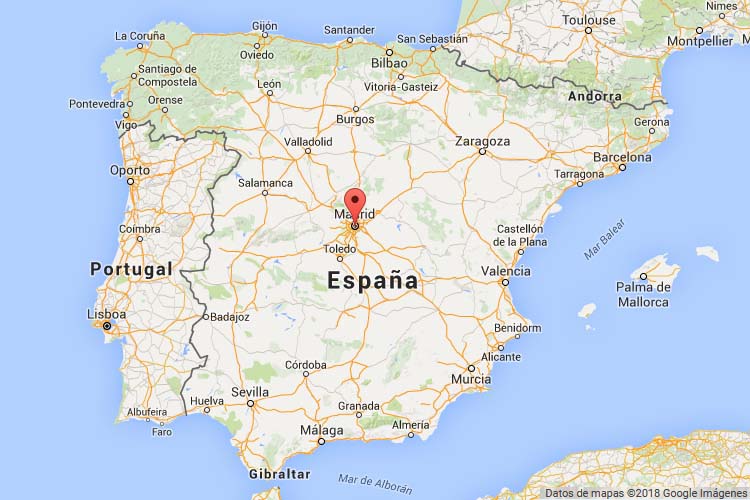
Historical review
Actual state
1st location
The house of Jacometrezo, where Philip II installed the experimental mint in 1591, was demolished during the construction of the Gran Vía, in the first decades of the 20th century. The house, the work of Juan de Herrera, was located between the streets of La Salud and Las Tres Cruces, on the site currently occupied by the Matesanz building. A commemorative plaque is located at Gran Vía 27.
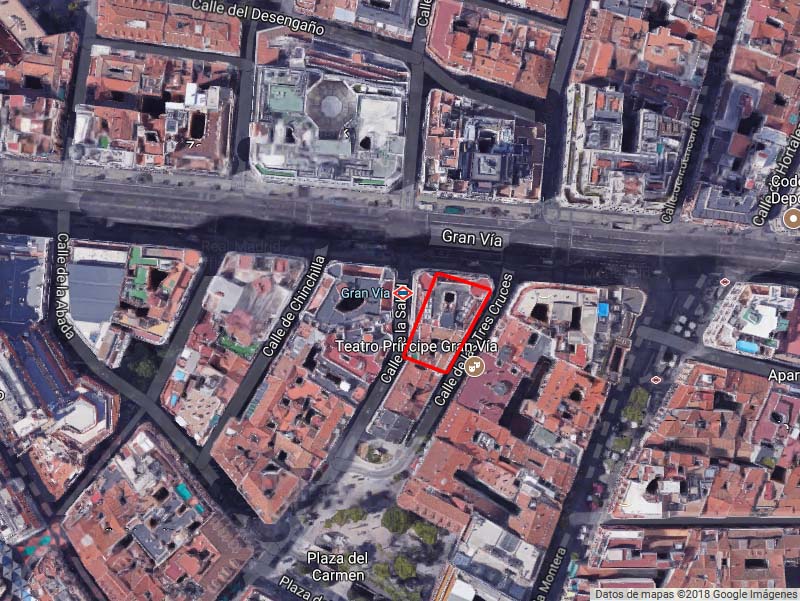
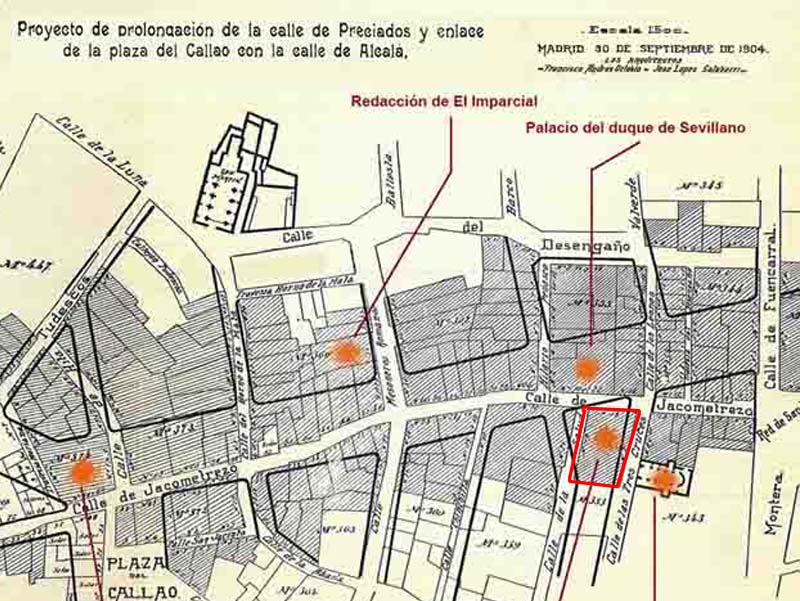
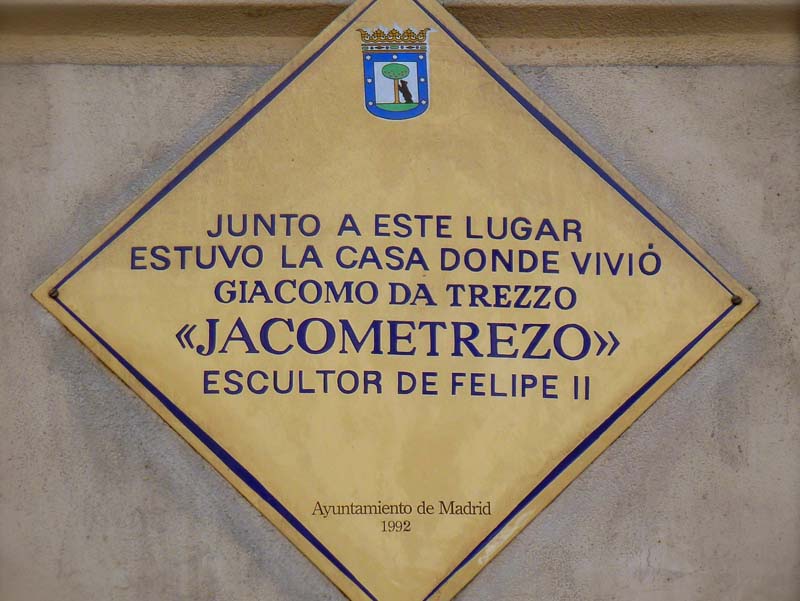
2nd location
The building acquired in 1615 by Philip III to house the Mint, was located in the place currently occupied by the gardens of Vistillas, under the Viaduct. In the map of Texeira of 1656 you can see its location.
It seems that the Mint was formed by the aforementioned building, which was built in 1591, and by another one, from the beginning of the 17th century, situated opposite, in number 30 of the same street and built by the Duke of Uceda, owner of the Palace that bears his name, which since the middle of the 19th century has been the Captaincy General. The main building, the one we are interested in, had a ground floor where the workshops were located and a main floor.
On March 17,1883, the public auction of the two old manor houses was announced. One of them, number 23, the one that housed the workshops and the machinery, ended up being converted into a residential building, remaining in place until the end of the Civil War, when the construction of the new viaduct (opened in 1942), wider than the previous one, it forced to demolish some buildings, including the old building where the first House of the Mint of Madrid was. The other building, the one dedicated to administrative functions, was gone many years ago.
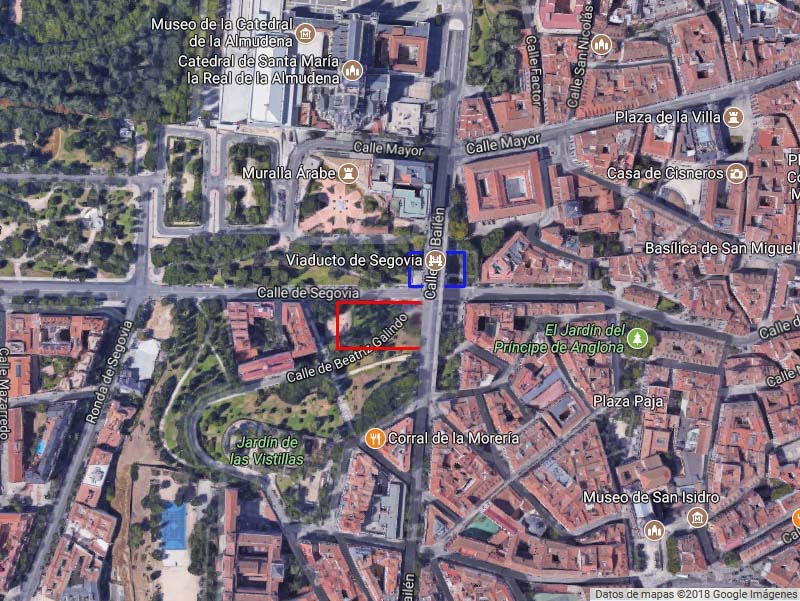
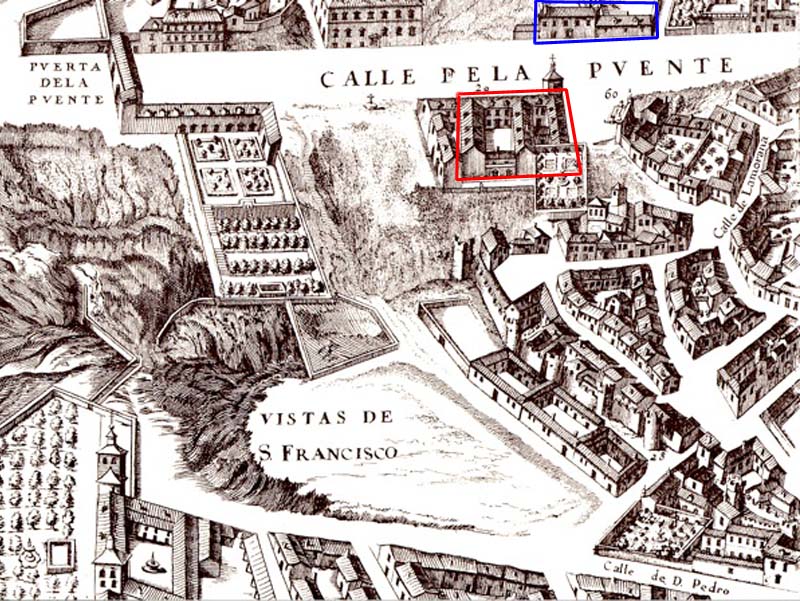
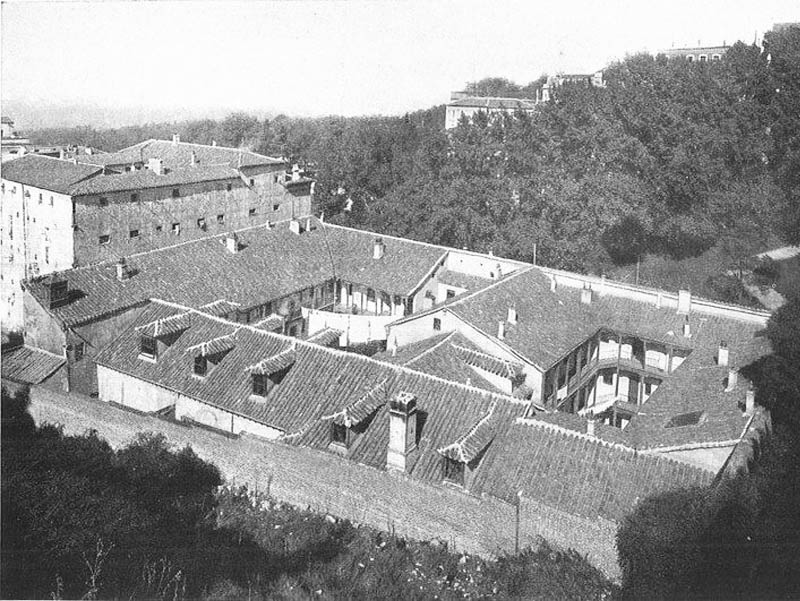
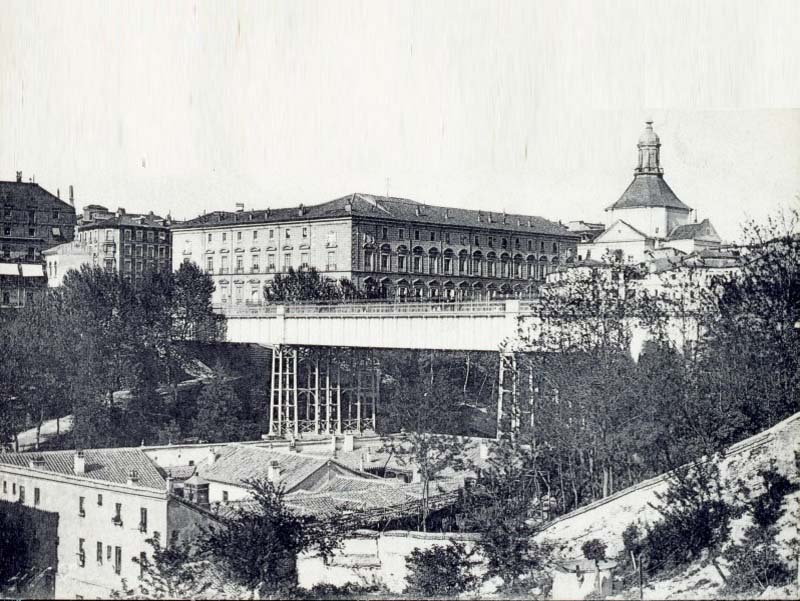
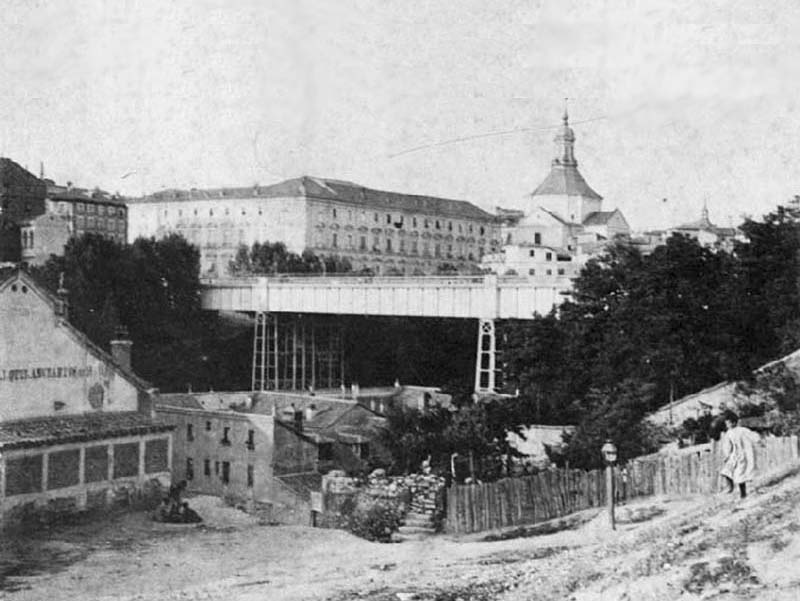
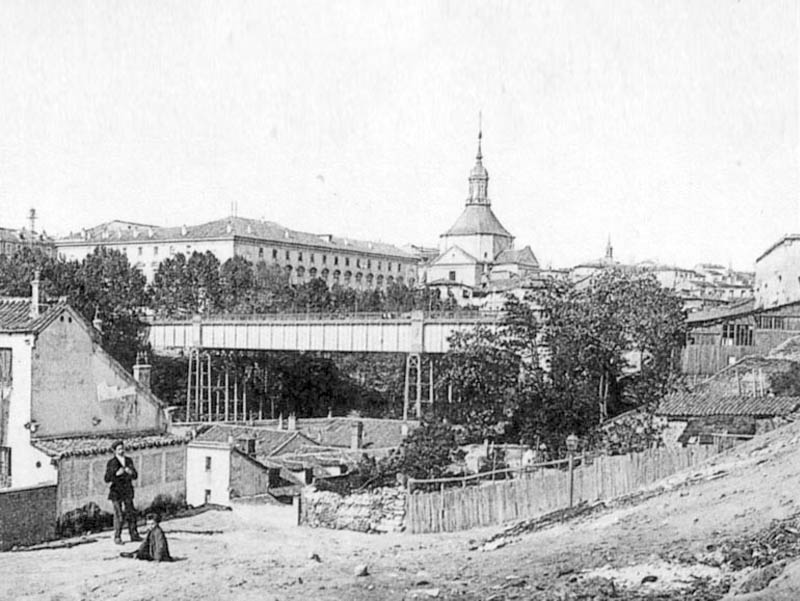
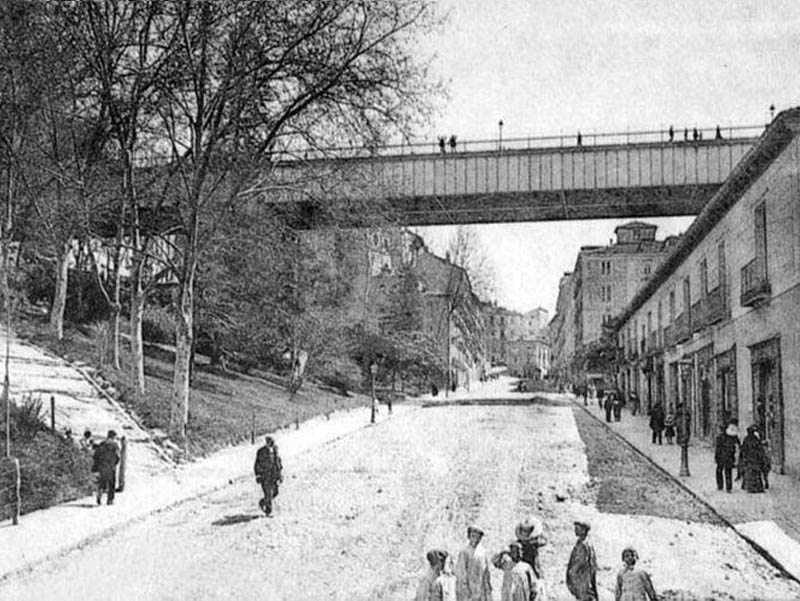
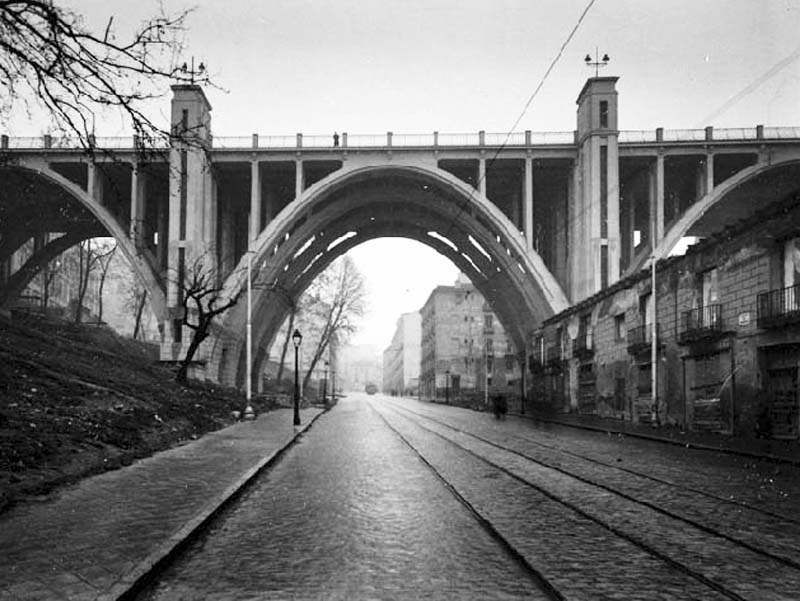
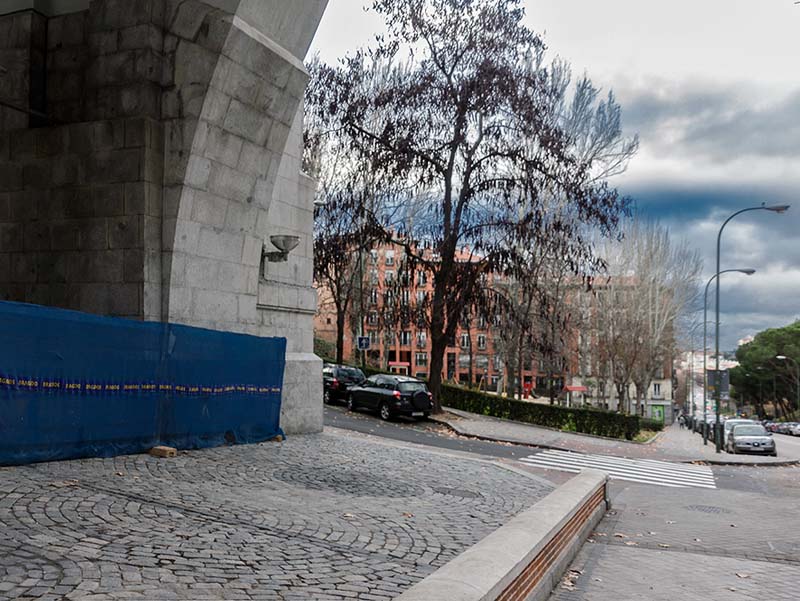
3rd location
In the reign of Philip IV, the installation for minting with mills from 1661 to 1664 was located near the Puerta de Alcalá. The Real Pósito de la Villa was later built on its site and, after the demolition of the latter, the Linares Palace will be built in the 19th century.
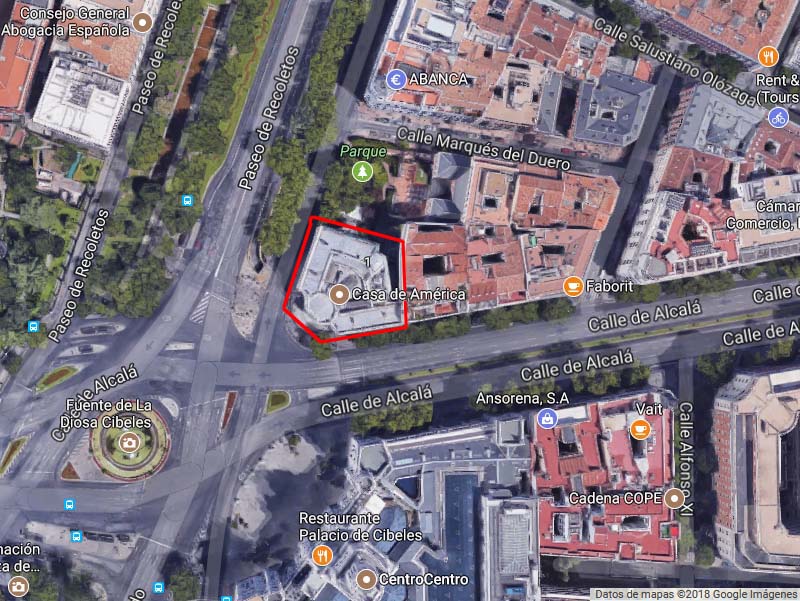
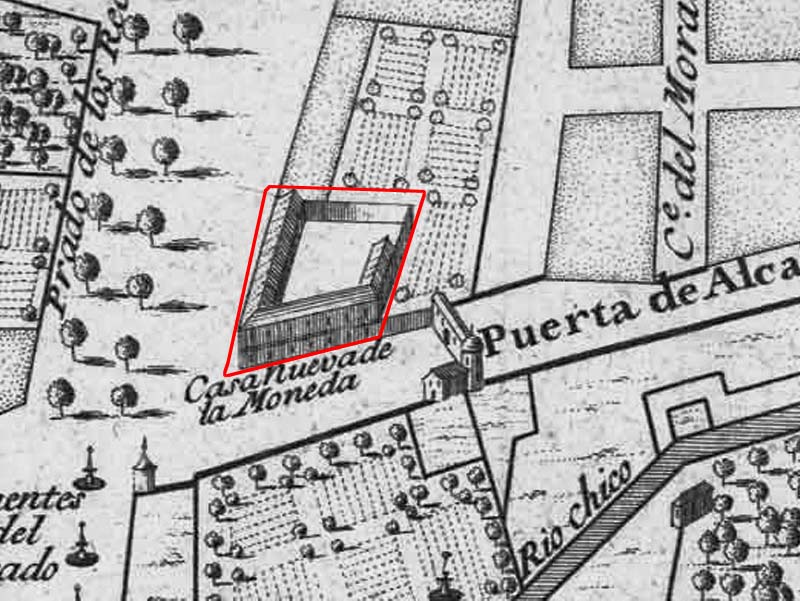
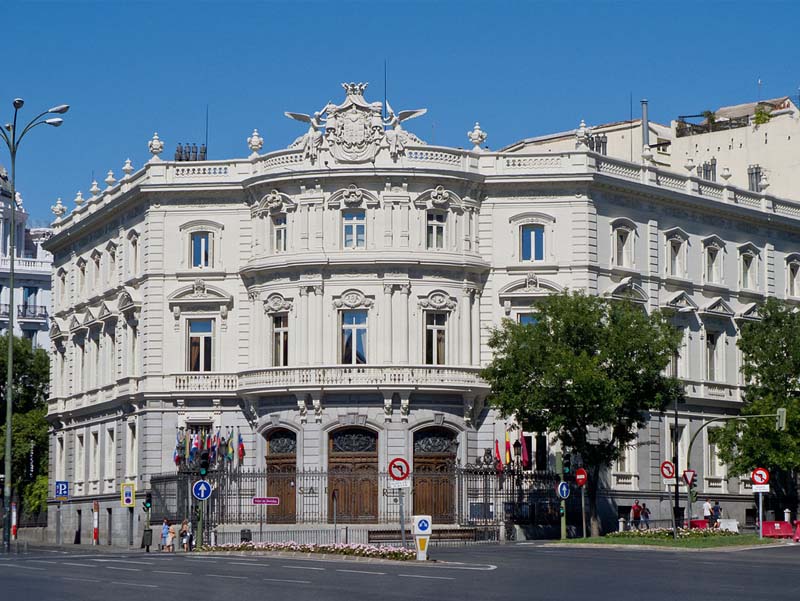
4th location
Between 1856 and 1861 Francisco Jareño built the Fábrica Nacional de Moneda y Timbre (National Mint and Stamp Factory) in the Plaza de Colón. In 1970 the State ceded the site to the Madrid City Council, the building was demolished and the resulting site was used to build the Discovery Gardens, dedicated to the discovery of America. The new public space was inaugurated in 1977 and is made up of several frames-sculptures made of concrete blocks, with embossed scenes of the Discovery.
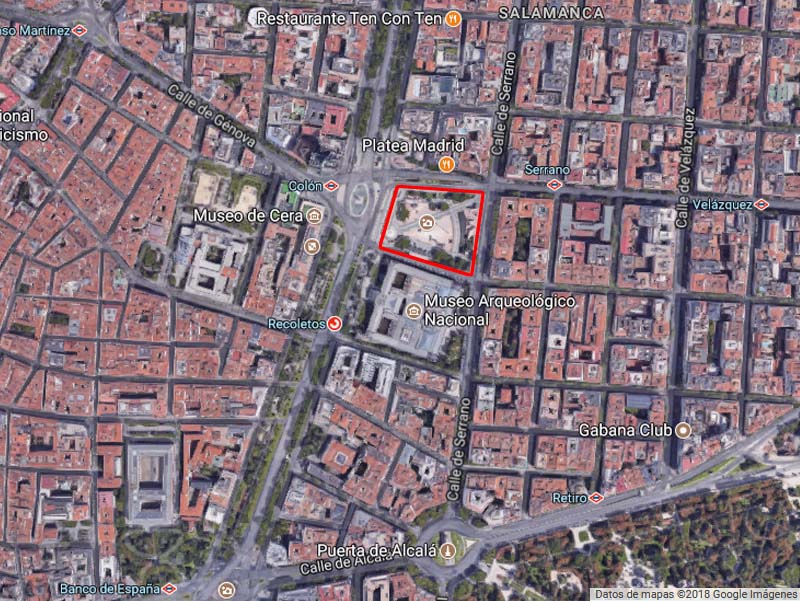
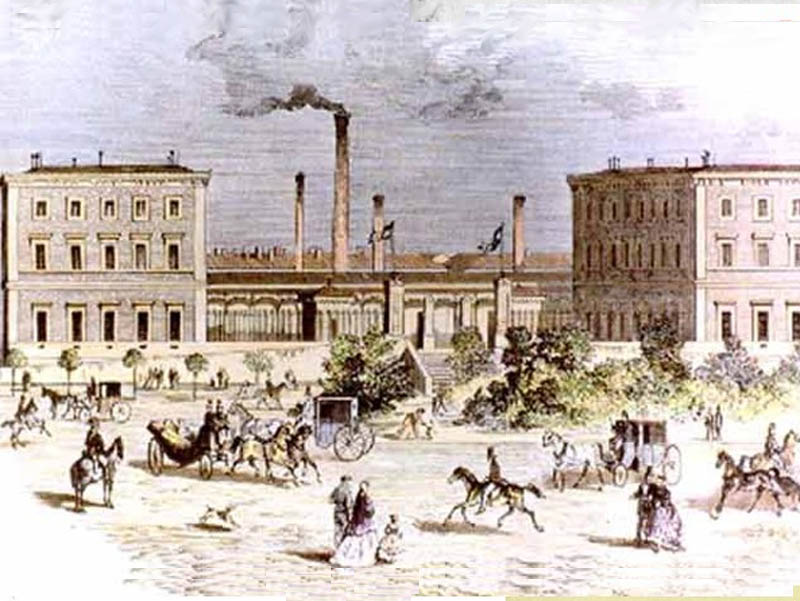
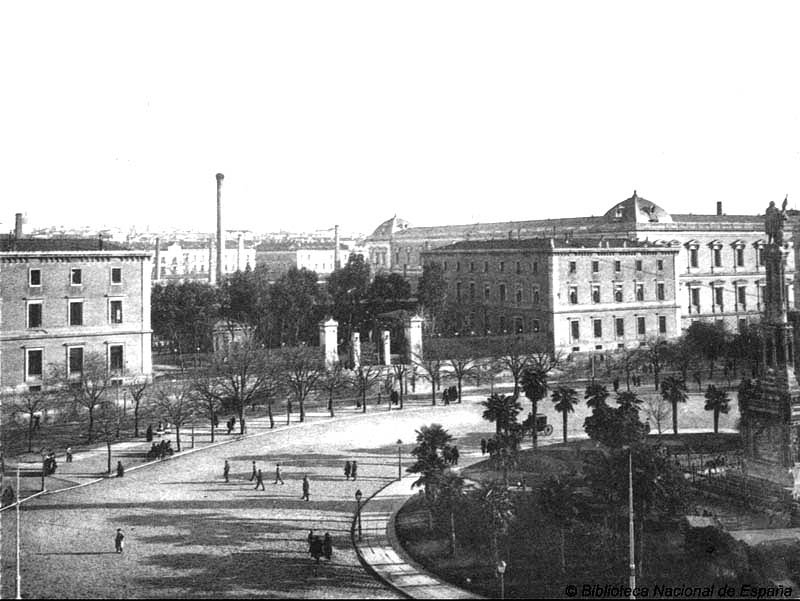
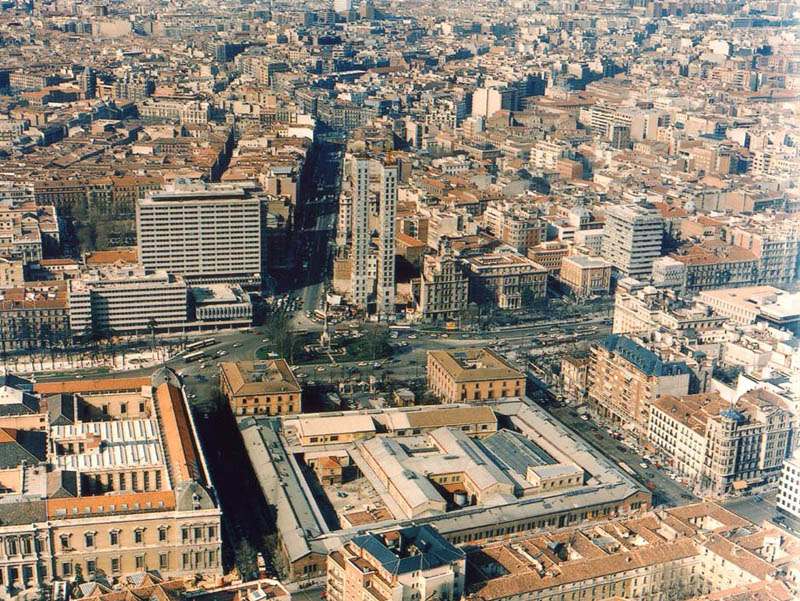
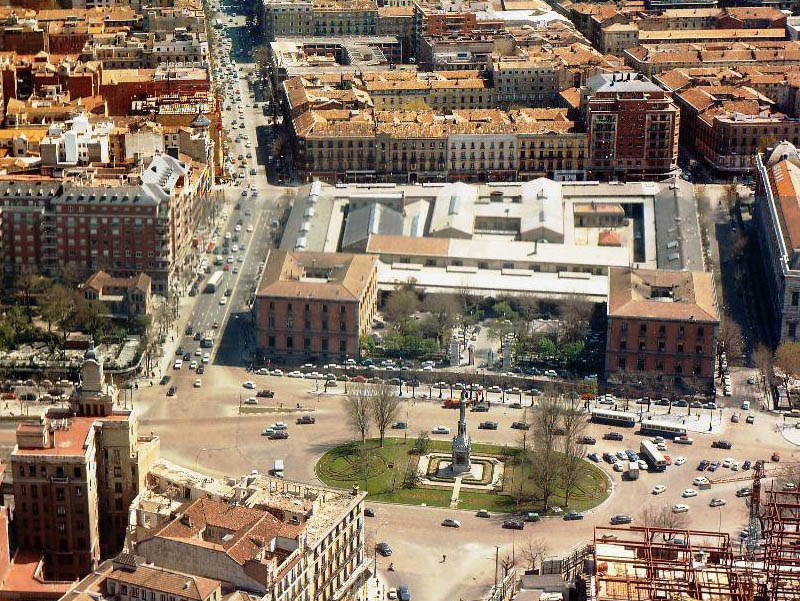
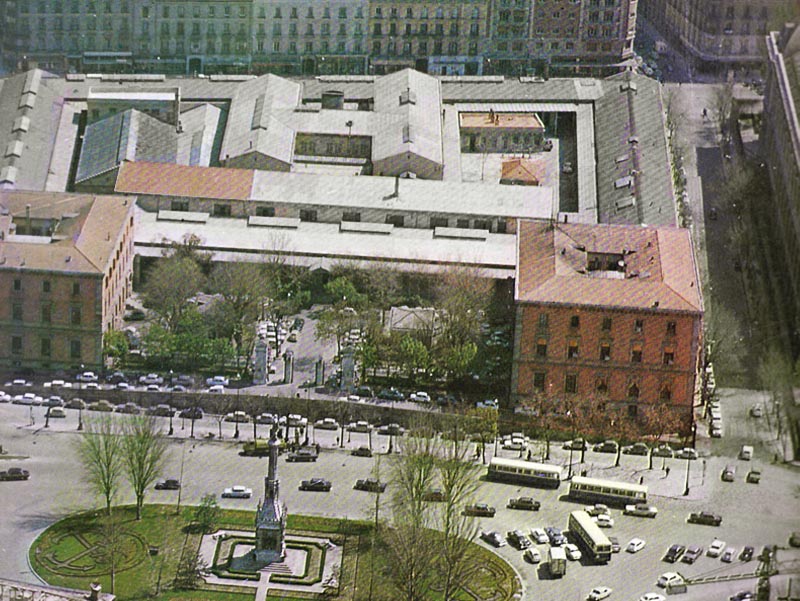
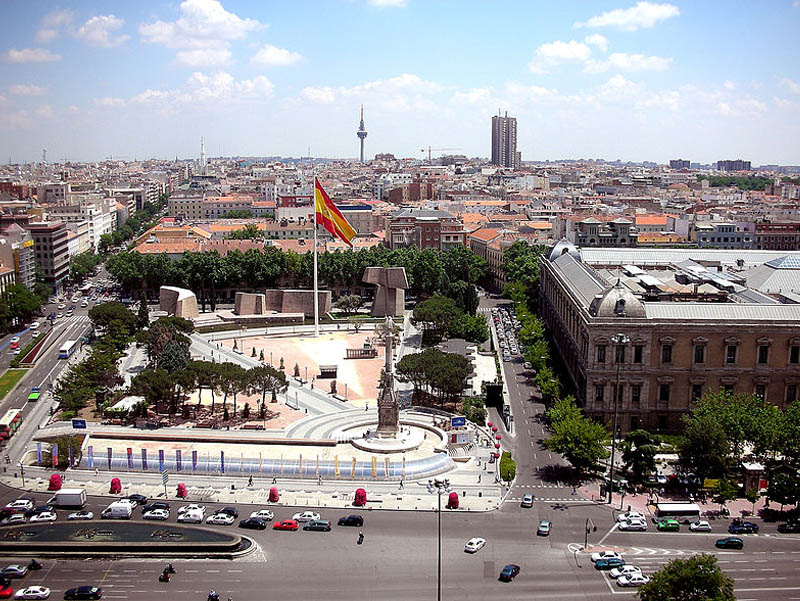
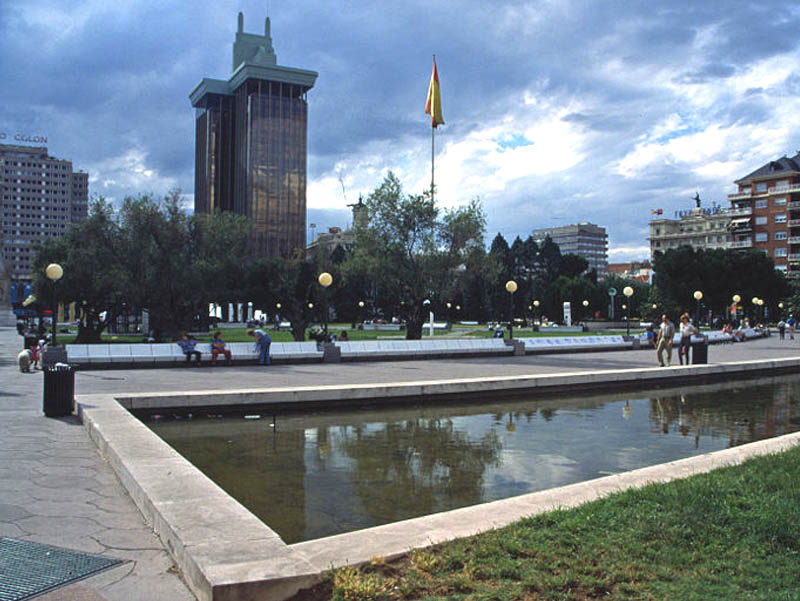
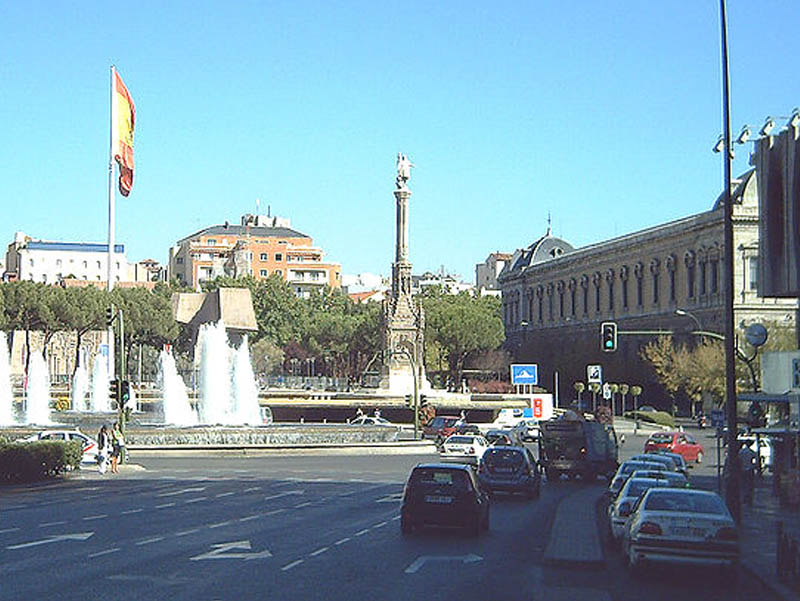
5th location
The current 1964 building is located in Calle de Jorge Juan 106. The Casa de la Moneda Museum, with one of the largest numismatic collections in Europe, and the Casa de la Moneda Foundation, which promotes cultural activities. There is a delegation of the institution in Burgos, where paper is produced for printing documents and banknotes.
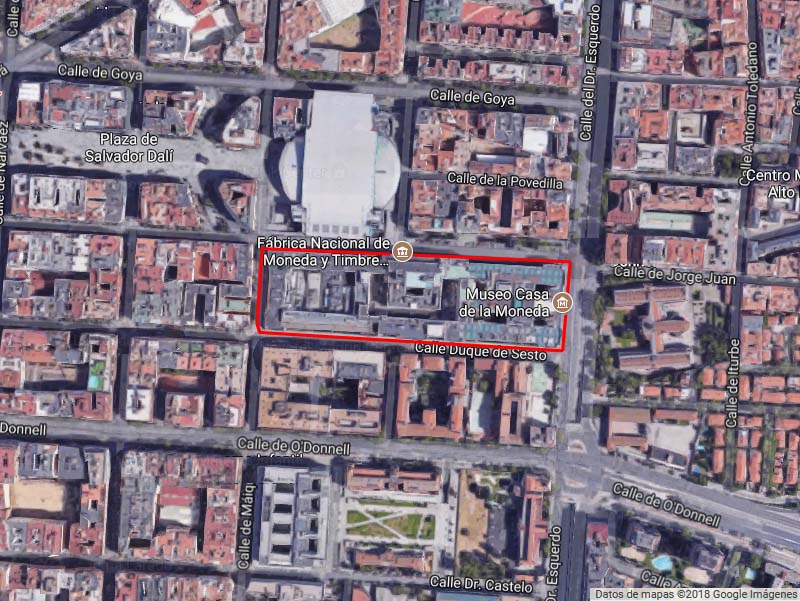
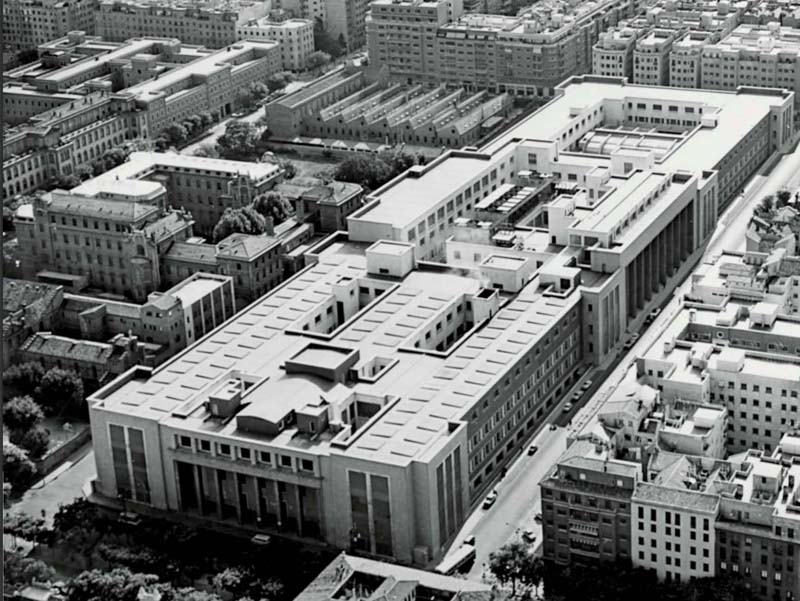
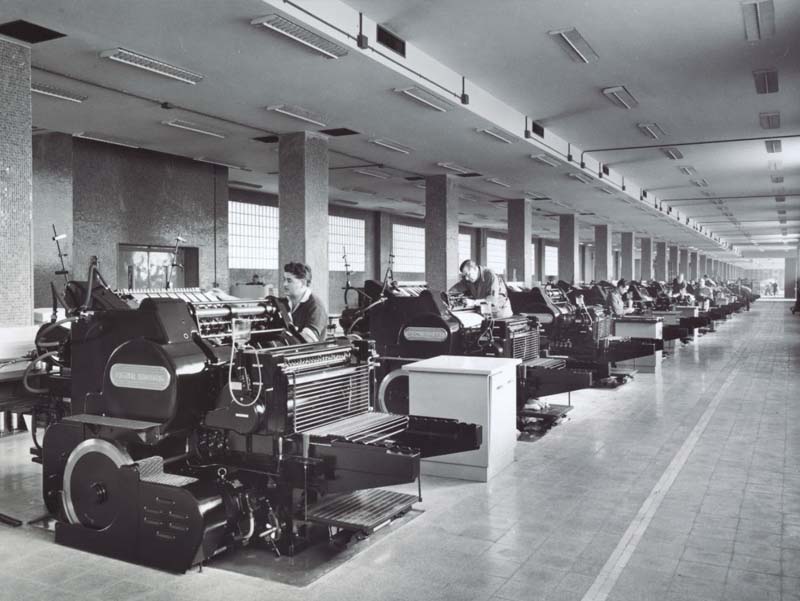
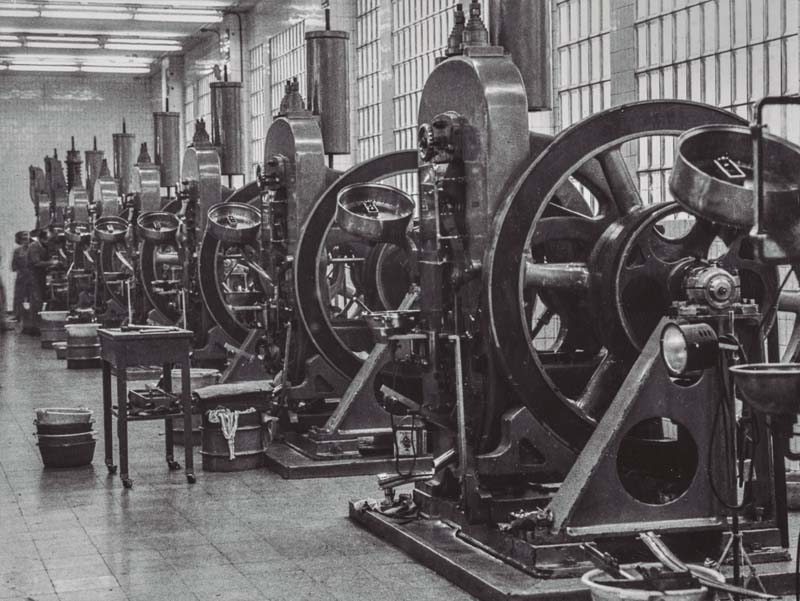
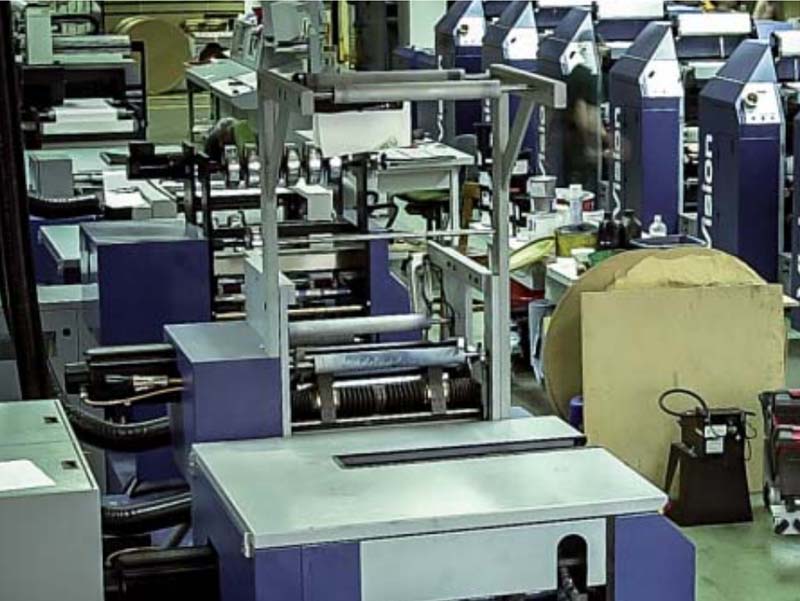
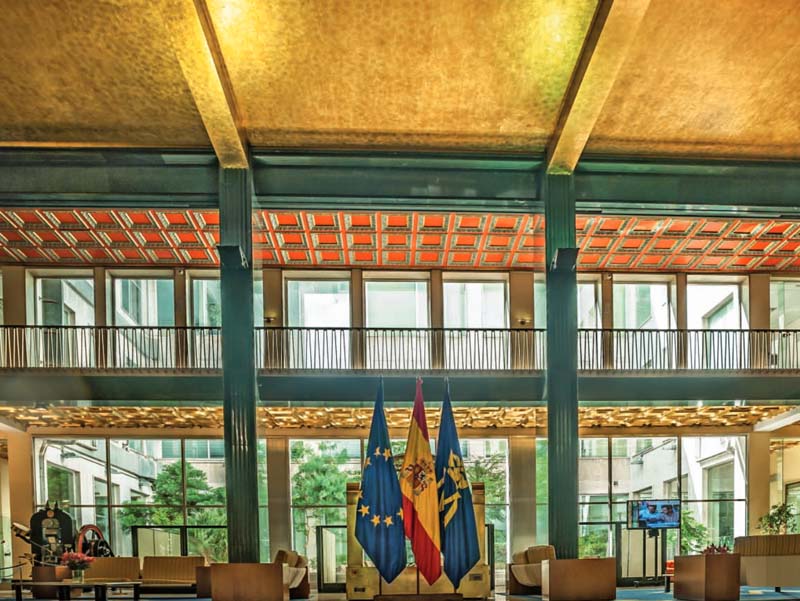
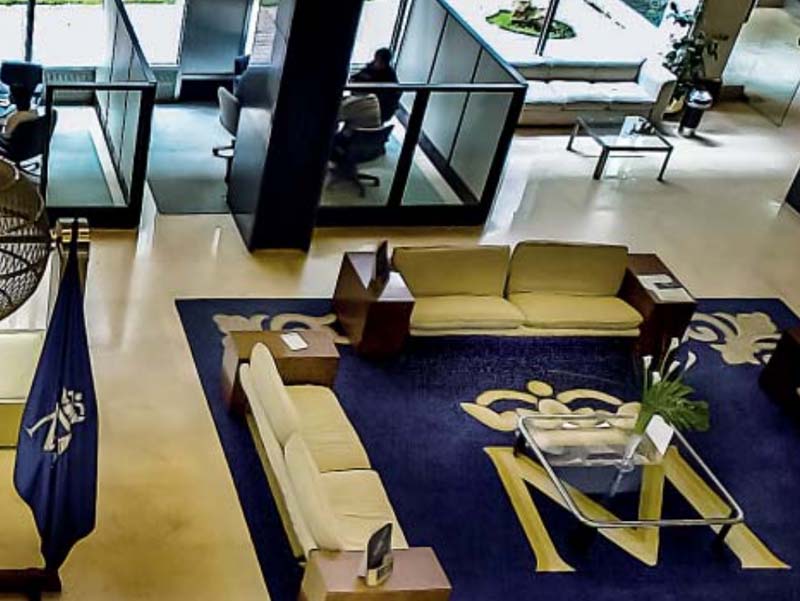
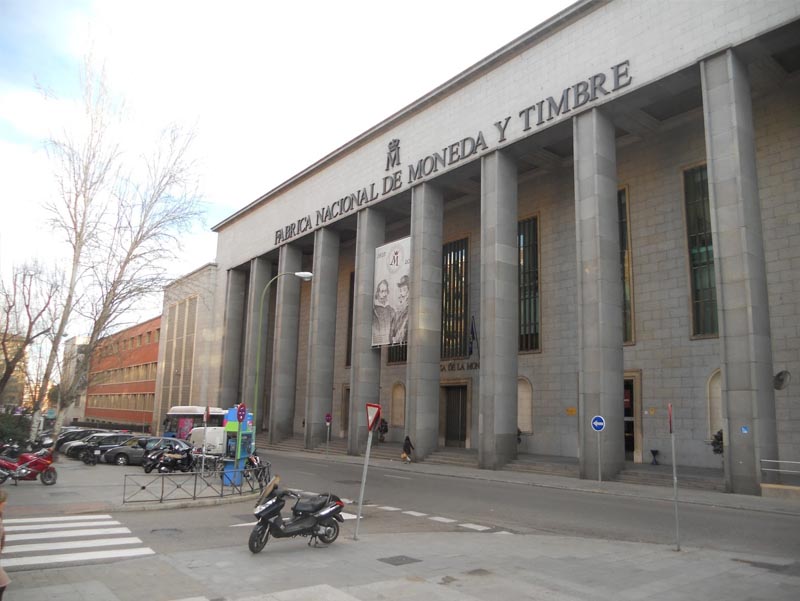
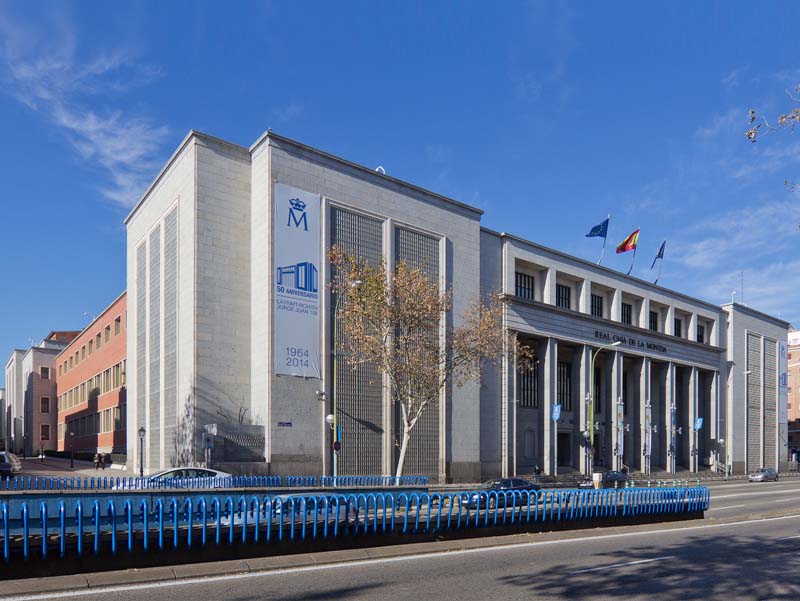
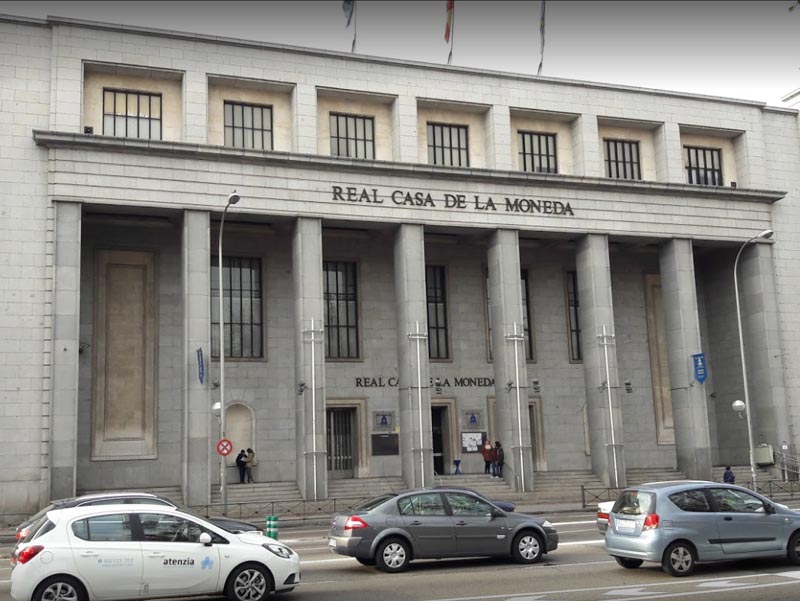
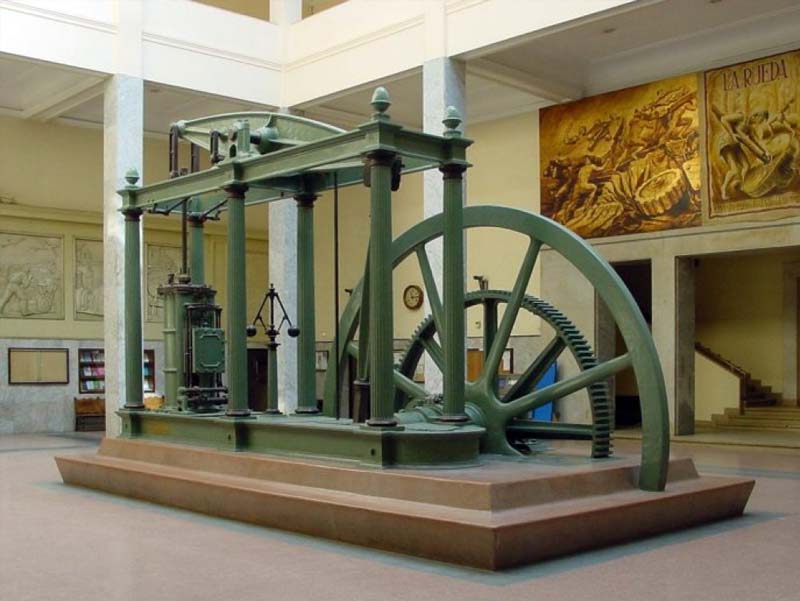
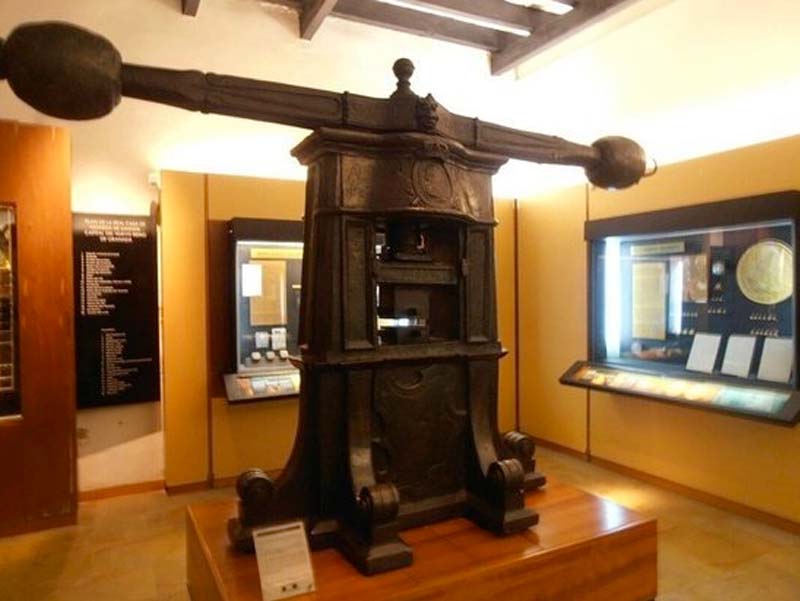
Source: Memoria anual 2014 (Real Casa de la Moneda); Las cecas de Madrid (Mario Sánchez Cachero; La Gatera de la Villa)
Translation post-edited and corrected by: Jesús M. García Jiménez
Translation post-edited and corrected by: Jesús M. García Jiménez
Type of coinage
| Period | Gold | Silver | Copper | |
|---|---|---|---|---|
| Felipe VI | 2014-2016 | |||
| Juan Carlos I | 1975-2014 | |||
| Francisco Franco | 1936-1975 | |||
| II República | 1931-1939 | |||
| Alfonso XIII | 1885-1931 | |||
| Alfonso XII | 1874-1885 | |||
| Amadeo I | 1870-1873 | |||
| Gobierno Provisional | 1868-1870 | |||
| Isabel II | 1833-1868 | |||
| Fernando VII | 1808-1833 | |||
| Jose Napoleón | 1808-1813 | |||
| Carlos IV | 1788-1808 | |||
| Carlos III | 1759-1788 | |||
| Fernando VI | 1746-1759 | |||
| Luis I | 1724-1724 | |||
| Felipe V | 1700-1746 | |||
| Carlos II | 1665-1700 | |||
| Felipe IV | 1621-1665 | |||
| Felipe III | 1598-1621 | |||
| Felipe II | 1556-1598 | |||
Source: eNumismatic (José David Rodriguez Soage).
Mint die-sinkers and assayers
| Mark | Period | Names |
|---|---|---|
| C | 1591-1592 | Melchor del Castillo |
| - | 1611 | Francisco Bautista Veyntín |
| Gº | 1615-1620 | Gonzalo Rodríguez Bermúdez |
| V | 1621-1628 | Juan Velázquez |
| P | 1630-1637 | ? |
| R | 1630-1639 | ? |
| M | 1632-1638 | Melchor Miguel |
| V | 1642 | ? |
| B, IB, BI | 1642-1645 | Juan Bautista de Barniches |
| A y Cruz | 1644-1646, 1648-1651, 1654 | Andrés Pedrera |
| A, AI (AI sobre I o sobre B) | 1650-1651 | Agustín Mayens |
| A | 1658-1662, 1666-1668, 1669 | Pedro de Arce Montero |
| G | 1659-1662 | ? |
| Y | 1661-1664 | Ygnacio de Payna o Payba |
| S | 1662-1664 | Sebastian González de Castro |
| R | 1666, 1672 | ? |
| BR | 1678, 1681-1682, 1689, 1703-1704 | Bernardo Pedrera y Negrete |
| M | 1681, 1685, 1687, 1689-1690, 1694 | Manuel Mayers |
| Y | 1706 | Ysidoro Párraga? |
| B | 1706-1707 | ? |
| J | 1706-1715, 1716-1719 | Joseph García Caballero |
| F | 1707 | Fernando Vázquez |
| F | 1719, 1731-1732 | Fernando Vázquez |
| JJ | 1720, 1728-1730 | Juan Joseph Caballero |
| A | 1721-1727 | Antonio de Cardeña |
| JF | 1730-1741 | Juan José García Caballero - Fernando Vázquez |
| JA | 1742-1744 | Juan José García Caballero - Antonio de Cardeña |
| J | 1747, 1759 | José Tramullas y Ferrer |
| JB | 1747-1759 | José Tramullas y Ferrer - Bernardo Muñoz de Amador |
| JP | 1759-1764 | Juan Rodríguez Gutiérrez - Pedro Cano |
| PJ | 1765-1782 | Pedro Cano - Juan San Faury |
| JD | 1782-1785 | Juan Bautista Sanfaury - Domingo Antonio López |
| DV | 1784-1788 | Domingo Antonio López - Vicente Campos González |
| M | 1788 | Manuel de Lamas |
| MF | 1788-1802 | Manuel de Lamas - Francisco Herrera |
| FA | 1799-1808 | Francisco Herera - Antonio Goycoechea |
| FM | 1801 | Francisco Herrera - Manuel de Lamas (Probable error del grabador? |
| AI | 1807-1808 | Antonio Goycoechea - Ildefonso de Urquiza |
| AF | 1808 | Antonio Goycoechea - Francisco Herrera |
| IG | 1808, 1809, 1810, 1813 | Ildefonso de Urquiza - Gregorio Lázaro Labrandero |
| AI | 1808-1812 | Antonio Rafael Narváez - Isidoro Ramos del Manzano |
| IA | 1810 | Isidoro Ramos del Manzano - Antonio Rafael Narváez |
| RS | 1810-1812 | Antonio Rafael Narváez - José Sánchez Delgado (Posible error del grabador) |
| IJ | 1812-1813 | Ildefonso de Urquiza - Jose Sánchez Delgado |
| RN | 1812-1813 | Antonio Rafael Narváez |
| GJ | 1813-1821 | Gregorio Lázaro Labrandero - José Sánchez Delagado |
| SR | 1821-1823 | José Sánchez Delgado - Isidoro Ramos del Manzano |
| AJ | 1823-1833 | Antonio Rafael Narváez - José Duro Garcés |
| JJ | 1833 | José Duro Garcés - José Luis de Castroviejo |
| JI | 1833 | José Duro Garcés - Isidoro Ramos del Manzano |
| DG | 1833, 1834, 1840, 1842, 1847, 1848, 1850 | Departamento de Grabado |
| NC | 1834 | Antonio Rafael Narváez - José Luis de Castroviejo |
| CR | 1834-1837 | José Luis de Castroviejo - Francisco Rodríguez |
| CL | 1838-1850 | José Luis Castroviejo - Eugenio Larra Langelot |
| SN-M | 1869-1870 | Donato Álvarez Santullano Calonge - José Rafael Narváez Izquierdo - Ángel Mendoza Ordóñez (Juez de Balanza) |
| SD-M | 1870-1873 | Donato Álvarez Santullano Calonge - Eduardo Díaz Pimienta - Ángel Mendoza Ordóñez (Juez de Balanza) |
| DE-M | 1873-1878 | Eduardo Díaz Pimienta - Julio de la Escosura Tablares - Ángel Mendoza Ordóñez (Juez de Balanza) |
| EM-M | 1878-1879 | Julio de la Escosura Tablares - Mauricio Morejón Bueno - Ángel Mendoza Ordóñez (Juez de Balanza) |
| MS-M | 1879-1887 | Mauricio Morejón Bueno - Pablo de Sala Gabarrell - Ángel Mendoza Ordóñez (Juez de Balanza) |
| MP-M | 1887-1890 | Mauricio Morejón Bueno - Félix Peiro Rodrigo - Ángel Mendoza Ordóñez (Juez de Balanza) |
| PG-M | 1890-1892 | Félix Peiro Rodrigo - Antonio García González - Ángel Mendoza Ordóñez (Juez de Balanza) |
| PG-L | 1892-1893 | Félix Peiro Rodrigo - Antonio García González - Domingo Lizaranzu Astarlos (Juez de Balanza) |
| PG-V | 1893-1896 | Félix Peiro Rodrigo - Antonio García González - Remigio Vega Vega (Juez de Balanza) |
| SG-V | 1897-1899 | Arturo Sandoval Lieuvín - Antonio García González - Remigio Vega Vega (Juez de Balanza) |
| SM-V | 1899-1906 | Arturo Sandoval Lieuvín - Miguel Martínez Fraile - Remigio Vega Vega (Juez de Balanza) |
| SL-V | 1906-1909 | Arturo Sandoval Lieuvín - Vicente López Fernandez - Remigio Vega Vega (Juez de Balanza) |
| LP-V | 1909-1910 | Vicente López Fernández - Vidal Peiro Zafra - Remigio Vega Vega (Juez de Balanza) |
| PC-V | 1910-1914 | Vidal Peiro Zafra - Rafael Caro Fresneda - Remigio Vega Vega (Juez de Balanza) |
| PC-S | 1925-1928 | Vidal Peiro Zafra - Rafael Caro Fresneda - Julio Segura Calvé (Juez de Balanza) |
| LM-S | 1929-1930 | Luis Lirio Santos Lamadrid - Manuel Fulgencio Martín García - Julio Segura Calvé (Juez de Balanza) |
| VV | 1937 | Victor Villanueva Vadillo (fiel-contraste en Burgos) |
Source: Glosario de Maestros de Ceca y Ensayadores. (Josep Pellicer i Bru), 1997.
Author:
2018-01-13 .